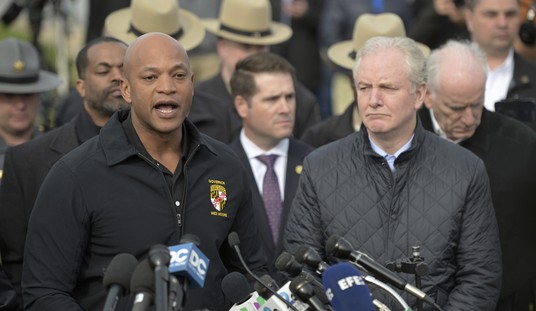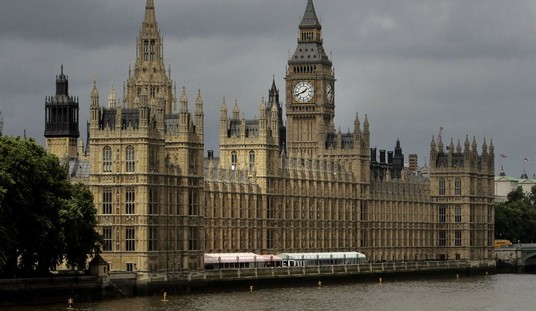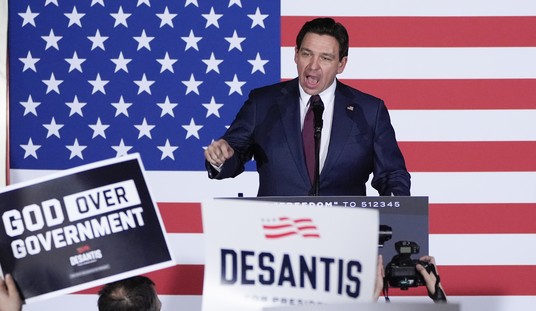It’s no longer a surprise when Piers Morgan weighs in on hot-button cultural issues in favor of the conservatives, as he does today in the question of transgender access to women’s sports. Today, he writes in the Daily Mail that such crossovers in MMA are likely to get someone killed, and uses one bout this weekend as a prime example:
It was the moment ideology met cold, hard reality.
Alana McLaughlin, 38, the second transgender MMA fighter to compete in the sport, used a powerful choke hold to beat Celine Provost, 32.
The latter was demonstrably a more skilled and experienced fighter during their bout on Friday night – McLaughlin only took up MMA earlier this year, whereas Provost’s been doing it for a decade – but just couldn’t compete with the overwhelming physical strength of her opponent.
Provost’s punches bounced off McLaughlin like a baby lion’s off its father, and when she was pinned to the ground, she couldn’t move and quickly tapped out.
None of which is entirely surprising given that McLaughlin spent six years serving in the US special forces as a man.
We’ll get to that description of the bout in a moment, but Morgan makes his pitch against transgenders in women’s sports on a broader basis than safety. It’s not only “incredibly dangerous” in the context of MMA, but also unfair and unequal for all women forced to compete with biological males:
If you’re in any doubt about how unfair this all is, let me take you through a brief history of what’s happened when male athletes have transitioned to be women and then competed against women born with female bodies.
In 2017, American sprinter CeCe Telfer was ranked 390th among male NCAA Division II athletes in 400m hurdles. In 2018, Telfer transitioned, and in 2019, Telfer was national NCAA Division II women’s 400m champion.
New Zealand weightlifter Laurel Hubbard failed to qualify for any men’s international tournaments during 14 years of competing as a man. Then Hubbard transitioned and qualified for 11 women’s tournaments including the Tokyo Olympics.
Australian handball player Hannah Mouncey scored zero goals in 22 appearances for the Australia men’s handball team, then transitioned and scored 23 goals in just six appearances for the Australia women’s handball team.
So how dangerous was this bout, and how badly did Provost get beat? It’s worth watching the highlights in this clip posted by MMA’s first transgender fighter, Fallon Fox, a US Navy veteran whom Morgan notes fractured the skull of an opponent:
Rather than having her punches bounce off McLaughlin as Morgan says, it appears Provost — who hadn’t fought in six years — rocked McLaughlin in the first round with a series of head punches. Provost has had only one other pro MMA bout, a loss in 2015 to another unknown, and two amateur losses to her record. Despite that, Provost managed to last until the middle of the second round and look pretty effective at times.
This still raises some questions, however. How did MMA sanction this bout in the first place? Other female fighters won’t enter the ring with McLaughlin (although this wan performance might convince them otherwise now), and it’s clear they were desperate to set up some controversy. Morgan and others delivered the controversy after the fact, but MMA appears to have offered up a sacrificial lamb to get it. Provost seems like a very bad bet by MMA against any of their professional fighters, let alone a biological male determined to fight as a woman.
On other points, Morgan has this right. Not only does the biological advantage exist, it has been amply demonstrated in other crossover competitions. Allowing transgender athletes to compete against women makes no sense in sports where biological females compete separately from men in the first place. Those distinctions exist to allow female athletes to compete fairly and to succeed as females. Athletic organizations need to protect their female athletes from being marginalized by males, which is the entire raison d’etre of women’s leagues and Title IX.
The obvious solution to this issue is to set up a third category for transgender athletes to compete against each other. If there aren’t enough athletes for competition in that category, then McLaughlin and other transgenders can either compete in their biological category or recruit for more competition.
Update: An editing issue made one sentence unclear, so I added “on a broader basis than safety” later to clarify my meaning.








Join the conversation as a VIP Member